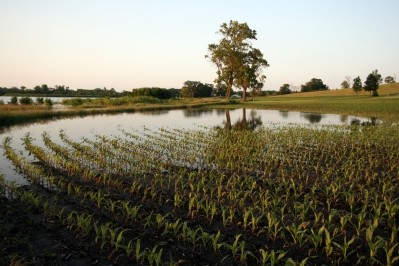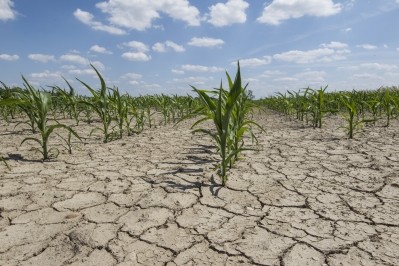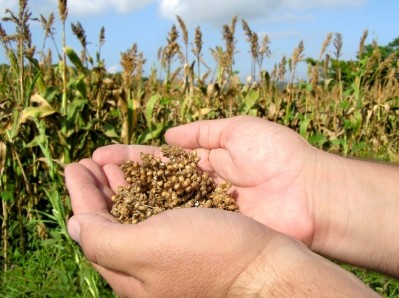US crop conditions remain strong, despite regional weather challenges

The overall conditions for feed crops have seen some slight variation, said the USDA in Monday’s Crop Progress and state crop progress and condition reports for the week ending August 7.
Nationally, the corn crop has dropped slightly in condition score, although the soybean crop has kept its position, said the department.
“The non-probability crop progress and condition surveys include input from approximately 4,000 respondents whose occupations provide them opportunities to make visual observations and frequently bring them in contact with farmers in their counties,” said the department. “Based on standard definitions, these respondents subjectively estimate the progress of crops through various stages of development, as well as the progress of producer activities. They also provide subjective evaluations of crop conditions.”
State fluctuations
At the state level, major corn and soybean producing states including Illinois, Indiana and Iowa have been seeing different reactions to the weather conditions, said the USDA.
“Crops continue to benefit from favorable weather,” said the department about Illinois. “Statewide, the average temperature was 76.4 degrees, 2.7 degrees above normal.”
However, the precipitation is slightly down from normal, the department said.
Iowa started the week with warm and humid weather, but saw cool morning temperatures later in the week, said the department. The southern part of the state had heavier rainfall which also dropped temperatures.
“Frequent rains have been good for pastures, but made it difficult to cut and bale hay,” the department said. “Livestock were reported to be in good condition with very little stress.”
However, Indiana has seen more weather-related stress develope, especially for fields without irrigation, said the department.
“Hot temperatures combined with little to no rainfall has left corn and soybeans stressed for moisture,” said Greg Matli, Indiana State Statistician for the USDA’s National Agricultural Statistics Service in the state report. “Most of the state went without precipitation or relief from the above average temperatures.”
The state has seen hay and pasture growth slow, livestock stress and potential damage to the non-irrigated corn crop, said the department.
“Some soybeans have aborted blossoms from moisture stress in drier areas,” it reported. “Growers expressed concerns about the crop given that this is the critical stage for proper bean development and plants have not received adequate moisture.”
Corn growth and condition
Nationally corn silking has reached 97% in the 18 states that account for the majority of the crop, said the USDA. About 53% of the crop has reached the corn dough stage, the fourth of the six development stages.
However, only about 9% of the crop has reached the corn dent stage, the fifth developmental stage, which is behind the 12% seen on average at this point in the year, the department said. States with crops behind their average development include Illinois, Iowa, Kansas, Michigan, Minnesota, Missouri, Ohio, Pennsylvania and Texas.
A majority of the crop, about 74%, is rated as good or excellent, said the USDA. However, the amount marks a slight drop from previous weeks where about 76% of the crop fit those categories.
Soy stats
Soybeans have almost completed their blooming across the country, with 91% of the crop having reached that stage, said the USDA. The pace puts the crop ahead of where it was last year and the multi-year average.
About 69% of the crop also has reached the setting pod stage, which is earlier than past years, said the department. By this point last year, 65% of the crop was setting pods, and on average about 61% of the crop has done so by this time.
States that are farthest with the setting pod stage include Arkansas, Louisiana and Mississippi, the department said. The only state lagging from past year’s performance is Michigan.
The crop has about 72% rated as good or excellent, an improvement over the 63% that earned the same rating at this point last year, said the department.
Other feed crops
Sorghum coloring is lagging behind where it usually is at this point in the year, said the USDA, although the amount of the crop that has headed is larger than average.
Overall, the crop condition has dropped slightly from last week with about 65% now being considered good or excellent, the department said.
The winter wheat harvest is reaching completion with about 94% harvested at this point, said the department. Harvest of the spring wheat crop has started and about 30% is completed.
Spring wheat condition is remaining steady, and is close to last year’s ratings, said the USDA. Currently, about 68% has been rated as good or excellent.
The oat harvest is proceeding more rapidly than last year, with about 68% of the crop in at this point, up from 57% last year, the department said. Similarly, about 32% of the barley crop has been collected, instead of the average 19%.
However, the barley crop appears to be outperforming last year’s crop, the department said. Last year about 66% of the crop was good or excellent at this point in the year, and currently 72% of the crop has gotten that rating.











